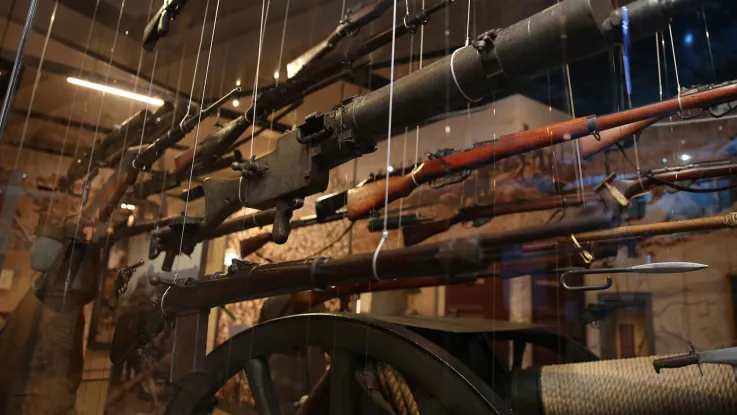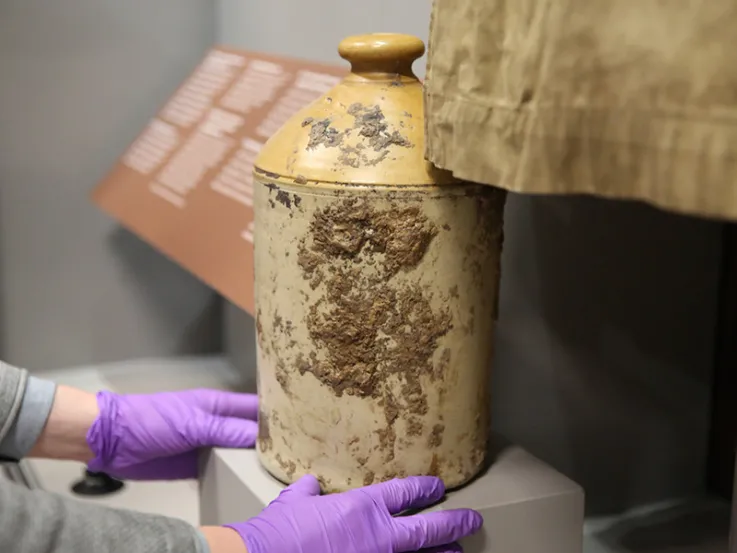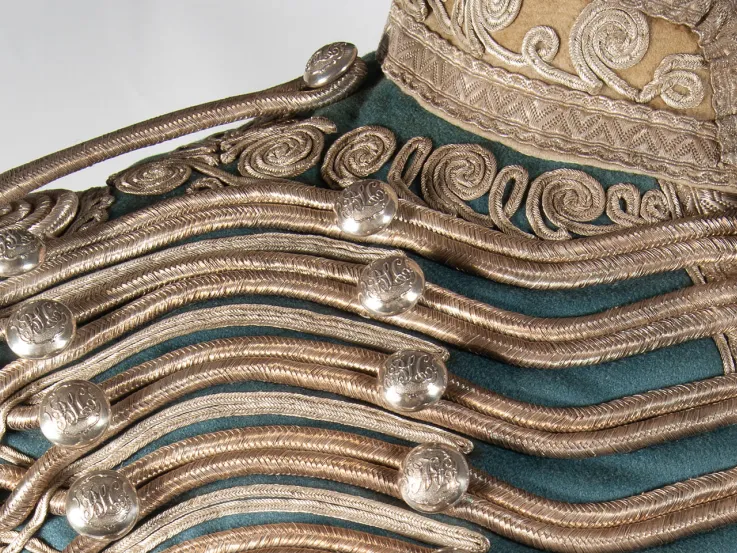
Phoenix UAV on display in the Conflict in Europe gallery
Unmanned surveillance
First deployed in 1999 during the conflict in Kosovo, the Phoenix was an unmanned aerial vehicle (UAV), commonly referred to as a drone. It was used to identify targets for the guns of the Royal Artillery.
After being launched from the back of a ramp vehicle, which served as a mobile runway, the Phoenix was able to capture battlefield imagery in all weather, day or night, via a surveillance camera. Its data was delivered in real time to a ground control station that could then distribute the intelligence more widely.
The Phoenix was designed to cover a radius of 50km (about 30 miles) at a maximum altitude of 2,700m (about 9,000ft). It was equipped with an airbag parachute system that could return it safely to the ground at the end of its mission, ready to be collected by a recovery vehicle.
It was used again during the early years of the Iraq War (2003-11), but was retired from service in 2008. The example we have in our collection is an early prototype that was never actually deployed.

Phoenix UAV on its launch rail operating in Kosovo, 1999 (© Crown Copyright)
Initial assessment
Before going on display in the Conflict in Europe gallery, our Phoenix prototype was stored in ten separate pieces on high-level shelving. Its light fibreglass body parts were relatively easy to retrieve with the help of a scissor lift. The engine and camera equipment proved a weightier challenge.
Using reference images for guidance, it was clear where most of the pieces should go. However, with a six-metre wingspan and the surveillance pod awkwardly positioned on its underside, the main problem was finding the space to assemble it.
In the field, soldiers would have used a handling trolley that allowed the various components to sit in position while being fitted together. We had to make do with tables and boxes instead.
In the end, the assembly was fairly straightforward, with much of the structure relying on hooks and spring-lock screws. A brief assessment established that, apart from historic knocks and marks, the only real issue was the dust it had picked up while in storage.

Various components of the Phoenix prior to assembly

The Phoenix (minus wings) being lifted by crane
Transportation
Owing to its size, the Phoenix required specialist transportation. This also allowed us to move it in one piece, except for the wings.
With the help of a large crane and sling, we managed to lift the drone onto the back of a truck, which then delivered it to the main museum building in Chelsea.
Final assembly
The Phoenix arrived on a wet and windy day, but made it safely into the gallery. Once inside, it was assessed again to make sure it was still in good condition following its road trip.
A steel beam had already been installed in the gallery, reaching out from the wall to the centre of the room. This was stress-tested with a tub of weights to ensure it would be able to support the drone throughout its time on display.
The wings were re-attached and the fully assembled object was positioned beneath the support beam, ready to be lifted towards the ceiling.

The Phoenix positioned beneath its support beam
Mounting
The drone was raised up using chains and slings, before resting in place on a scissor lift so that the permanent cabling could be attached. At this stage, we had to remove the wings again as they were getting in the way.
It was eventually cabled to the correct height and secured in place. We then had the tricky task of re-attaching the wings with the Phoenix ‘in flight’.
The final piece to be installed was a small antenna that fits into the right wing.
See it on display
The Phoenix offers an insight into the advancements in surveillance technology that took place during the 20th century. It provides a stark contrast to instruments like telescopes and trench periscopes that had been used to identify and monitor enemy positions in earlier times.
You can see examples of all these items on display in our Conflict in Europe gallery.





